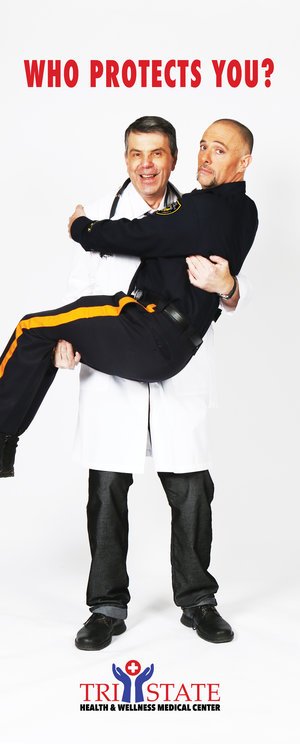Crime in the Nation’s Capital: Can You Change Violent Offenders?
/Crime in the Nation’s Capital: Can You Change Violent Offenders?
By: Leonard Sipes
I was the senior public affairs specialist for a federal criminal justice agency in Washington, D.C. I sat in endless meetings with federal and D.C. officials as they discussed efforts to stop or modify violence. Washington, D.C. has the best-funded justice system in the country. It has access to crime control and prevention experts from its endless think tanks. Its courts, parole and probation, prosecutor’s office and pretrial services are well-funded federal agencies with very low caseloads (compared to the rest of the country). Even non-federal D.C. agencies (i.e., the police) get a ton of money from the federal government.
Collectively, these agencies come into contact with an endless number of offenders on a daily basis. The services they provide to those caught up in the justice system are the envy of the country (while noting that advocates insist that it’s not enough).
If you spend time in D.C. examining crime issues, you will come into contact with an abundance of well-educated, very experienced, compassionate people who fervently believe that given enough resources, you can stop people from engaging in violence. This discussion has been going on for decades. Yet when you look at a list of the most dangerous cities in the U.S., Washington, D.C. is often near the top of the list.
With a resource-rich and dedicated justice system powered by federal dollars, one would expect D.C. to get complicated initiatives right. There are thousands of articles on evidence-based programs to guide them. There are hundreds of nationally known experts who will tell you what to do and how to do it.
At one point, the D.C. government set out to do whatever it took to save Jahmeze Williams, the 20-year-old slumped over in the back seat of a car, a bullet lodged in his right arm.
He died within half an hour, shot inches above a tattoo of his mother’s name.
Williams was one of about 230 D.C. residents the city had dubbed “People of Promise,” a diplomatic way of referring to a list of those considered most at risk of committing violence — or becoming a victim of violence themselves. The initiative, a key pillar of D.C. Mayor Muriel E. Bowser’s effort to combat crime as homicides continue at a pace that could reach a two-decade high, was designed to bring intense government services to those on the list, assigning a cabinet-level official to supervise each person’s case.
But about five months after the city formally launched the program, two people, including Williams, had been killed, at least eight others on the list had been shot and more than a dozen had been charged in connection with non-fatal shootings, carjackings and unlawful possession of firearms, according to city officials and a review of the list by The Washington Post against court and other public records.
City officials said they enlisted a wide swath of agencies to implement the program — including behavioral health, public works and transportation. But they acknowledged missteps in the process, and they conceded they have yet to even make contact with about half of those they want to protect. Asked to grade the initiative, Deputy Mayor for Public Safety and Justice Christopher Geldart said he would give it a “C-plus.”
The Washington Post reviewed a copy of the list of People of Promise, which the city declined to provide. The document includes dozens of repeat offenders, multiple members of families linked to generations of violence in D.C., and people charged in some of the most high-profile shootings in the region.
Those on the list appear to be men between 15 and 64 years old, with the majority between 18 and 35. Most people are affiliated with a known gang or crew and have previous charges ranging from low-level drug offenses to first-degree murder. At that point, 52 people had been slain in the District since January. Over the next five months, that number about tripled. But by late September in D.C., the number of slayings was about even compared to the same time in 2021 — when there were more than 200 killings in a year for the first time in almost two decades.
Bowser has said she can bring gun violence down by 90 percent by focusing on “the people and places where most of the crime is happening.”
Over the last two fiscal years, the city spent $139 million on efforts outside policing to combat gun violence. It is unclear what subset of that funding went directly into People of Promise, since the program is meant to streamline an array of services from multiple agencies, rather than offer new ones.
People of Promise grew out of an analysis performed by David Muhammad, executive director of the National Institute for Criminal Justice Reform, on shootings in 2019 and 2020. The District government paid him $65,000 over two years for a process that included identifying the 230 or so people most at risk of committing gun violence or being victimized by it. As of mid-September, Geldart said the city had made contact with 122 people on the list of about 230 — about 40 of whom are currently incarcerated. He said government workers had been able to “actively engage” about 94 of the people they reached. That, he said, means they did something like providing employment or mental health services, or successfully conducted safety check-ins.
The mayor suggests a 90 percent reduction in gun violence by focusing on high-risk people and places. She relies on an abundance of criminological data stating that a minority of offenders and places are responsible for most violence. Focus your resources there and you will get significant reductions. If you have the best possible resources, talent, and data, what could go wrong?
For those of us writing about crime and violence, the overwhelming majority of what we read comes daily from very progressive national sources.
To summarize their message, cops and prisons are inherently flawed responses to crime and criminals. What are needed are “proven, evidence-based” modalities that offer the services necessary to assist people caught up in the justice system. They will offer an endless array of programs they deem successful to guide the rest of us. The problem with their assessment is that the overwhelming number of programs and modalities provided have little to no proof of effectiveness. Criminology relies on well-constructed, methodically correct evaluations that have been replicated over time using independent evaluators. Using this as a benchmark, there are few studies that indicate that providing services to offenders works. In a massive meta-analysis of rehabilitation programs, interventions either didn’t work, or they didn’t work well, resulting in the vast majority of offenders returning to the justice system.
This can be an intimidating thought. When I offer this analysis through my writings, there are many who insist that these programs do work. Critics offer small studies using tiny numbers without independent evaluations (i.e., violence interrupters) that suggest huge reductions in recidivism. There was a study called Project Hope out of Hawaii that was probation based offering very significant reductions in new crimes. It was the darling of many of us until it was replicated in a variety of states and deemed ineffective.
To summarize, I believe the problem is not with D.C.’s implementation (while acknowledging that there are issues). I believe that it’s the “science” itself. The mayor correctly relies on criminological data suggesting that a focus on people and places without understanding that high-risk offenders are notoriously difficult to change based on massive rates of recidivism. Regardless, the vast majority of untargeted offenders are still committing crimes. A 90 percent reduction in gun violence was wildly unrealistic.
The problem with many offenders is that they have vast histories of mental illness or emotional problems plus substance abuse issues. Most were raised by single mothers in high-crime areas where the literature cites high numbers of abuse and neglect, brain damage and PTSD along with a host of other disturbing emotional conditions. As a parole and probation agent once told me, “They have chips on their shoulders the size of Montana.” If you were raised in a climate of extreme dysfunction, you are (or can be) at war with the world.
Many of us have been calling for a massive increase in the research funding of the Department of Justice to figure out why so many programs seem to fail. There should be a multi-day national conference to address these issues. But admitting failures is sort of like conceding that the science itself (as we currently understand it) is flawed. Programs like “People of Promise” and rehabilitative efforts need to continue as long as they have the funds for comprehensive, independent, and replicated evaluations throughout the life of the program and beyond. Everything should be on the table using the same criteria. Let the results speak for themselves.
But in the meantime, we have cities with immense violence problems that need to be addressed. And yes, at the moment, all we have with a proven track record is law enforcement, proactive policing, and separating the dangerous from the rest of us. That’s not progressive, but for the moment, it’s the truth.
Leonard Adam Sipes, Jr.is a retired federal senior spokesperson. A former Adjunct Associate Professor of Criminology and Public Affairs - University of Maryland. Former advisor to the “McGruff-Take a Bite Out of Crime” national media campaign. Past police officer. Aspiring drummer. Operator of CrimeinAmerica.net. His book based on thirty-five years of criminal justice public relations,” Success with the Media: Everything You Need to Survive Reporters and Your Organization” is available at Amazon and additional booksellers. He can also be found @ leonardsipes.com










